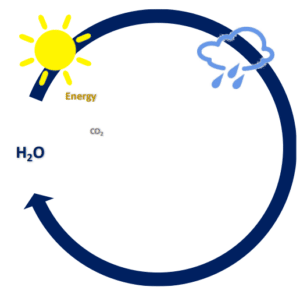Author: Allen Williams PhD In the first half of the 1900’s Oktibbeha County, Mississippi had more than 800 small dairy farms. The large number of dairy farms earned the county the nickname of “Little Wisconsin.” These farms were using smaller breeds, like the Jersey and Guernsey, and the herds were primarily grazing.The climate at that […]
Read MoreAllen R Williams, Ph.D. Once in every few generations someone comes along who defies all conventions and turns things on their ear. To do this, it takes a truly unique person who does not care what their neighbors think or what the world thinks. Instead, they doggedly pursue what they believe to be right. Such […]
Read MoreBy: Allen R Williams, Ph.D. Without even realizing it, for well over than a century, American farmers have had the idea that nature is a beast to be tamed and contained. If we want to be good farmers and ranchers we must conquer nature and overcome her. We have invented many mechanical and chemical tools […]
Read MoreMy consulting partners and I teach a form of grazing that we call Adaptive Grazing. Adaptive grazing, also called Flex Grazing, is first and foremost not a rigid system or even a routine. It allows the practitioner to address multiple goals and objectives, and to adjust to changing conditions. The benefits derived from adaptive grazing […]
Read MoreBy Paul Brown It wasn’t too long ago that February and March were our busiest and most stressful months on the ranch. Like most other ranchers in the area, it was calving season for us. For years we calved during this time of year because it was “normal.” The argument is that the calves would […]
Read MoreBy Allen R. Williams and Russ Conser Lion King, as with all Disney movies, has a great plot and some catchy tunes, but also a deeper moral to the story. In this case – it is about the “circle of life.” Circles have no beginning or end. If we start anywhere on a circle, and […]
Read MoreBy Allen R Williams, Ph.D. Epigenetics is the study of changes in organisms caused by modification of gene expression rather than alteration of the genetic code itself. Genes occur in pairs and code for specific traits or combinations of traits in the body. Most genes can have significant variation in the degree to which they […]
Read MoreBy Allen R. Williams, Ph.D. Since the 1970’s there has been a trend in the beef cattle industry to select for larger cattle. This has been the result of a dogged pursuit for heavier weaning weights, higher yearling weights, desiring to bein the top 10% of breed EPDs in growth traits, and “producing what the […]
Read MoreBy Allen R Williams, Ph.D. To most people genetic selection can be a complicated task. There is so much data out there that many folks get lost in the translation. What to use and how much emphasis to put on each trait becomes an overwhelming issue. EPD’s, actual trait measurements, phenotype, pedigrees, ultrasound data, linear […]
Read MoreBy Allen R. Williams Ph.D. The final principle in our series is the Principle of Disruption. We may have a negative connotation of the word “disruptive” because we have heard that “nobody wants a disruptive kid” or we “have to be nice and not disrupt the meeting”. However, sometimes it pays to be disruptive, to […]
Read MoreBy Allen R Williams, Ph.D What is the Principle of Diversity? It is quite simple. In my experience in working with several thousand farmers and ranchers across a wide variety of environments and landscapes, I have found that plant species complexity and diversity are critical to building positive compounding and cascading benefits. In that regard, […]
Read MoreBy Allen Williams & Russ Conser Last month we talked about your role in managing grazing to keep the carbon-centric circle of life cycling. This month, we’ll dig deeper into how the cycling of carbon in this circle leads the cycling of water. The fact that water is really important for growing plants is not […]
Read More- « Previous
- 1
- …
- 9
- 10
- 11




